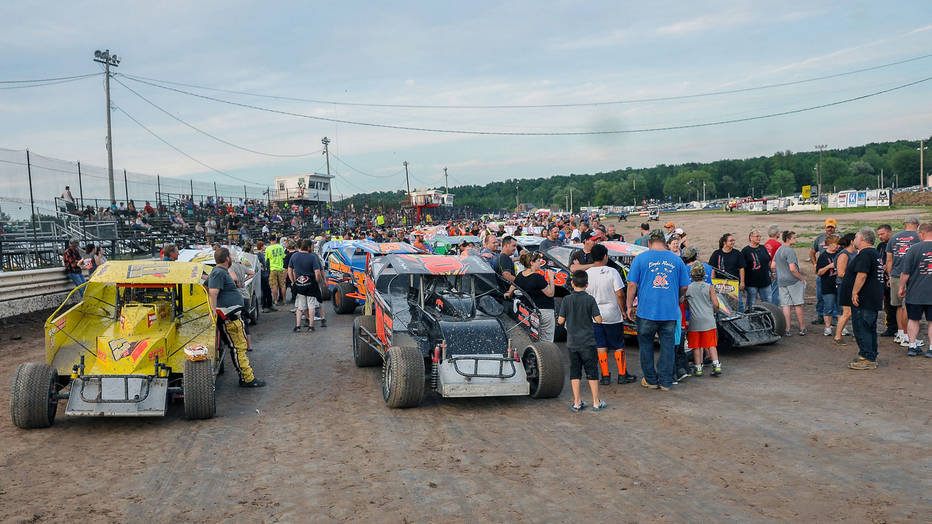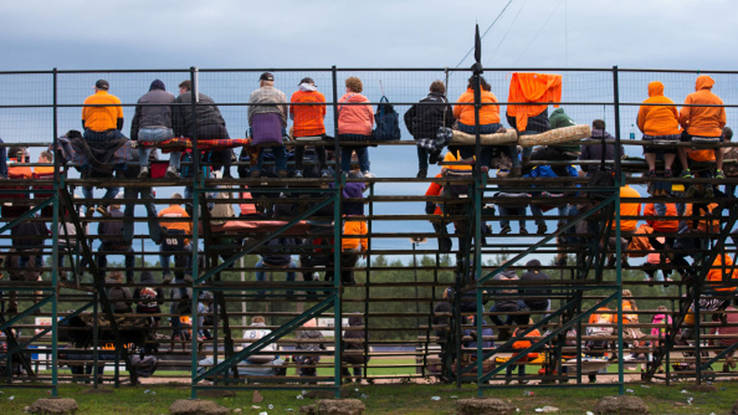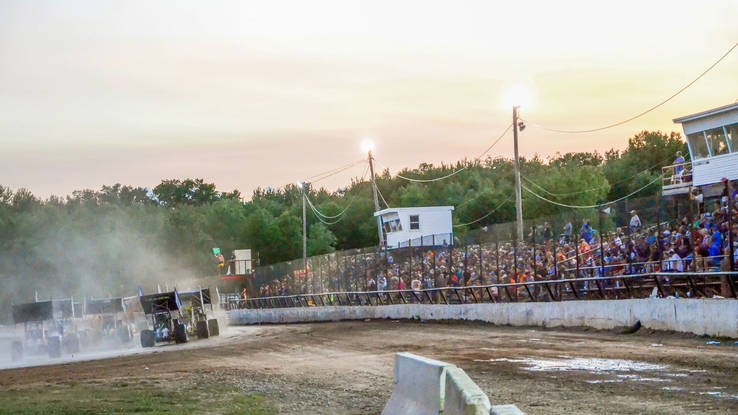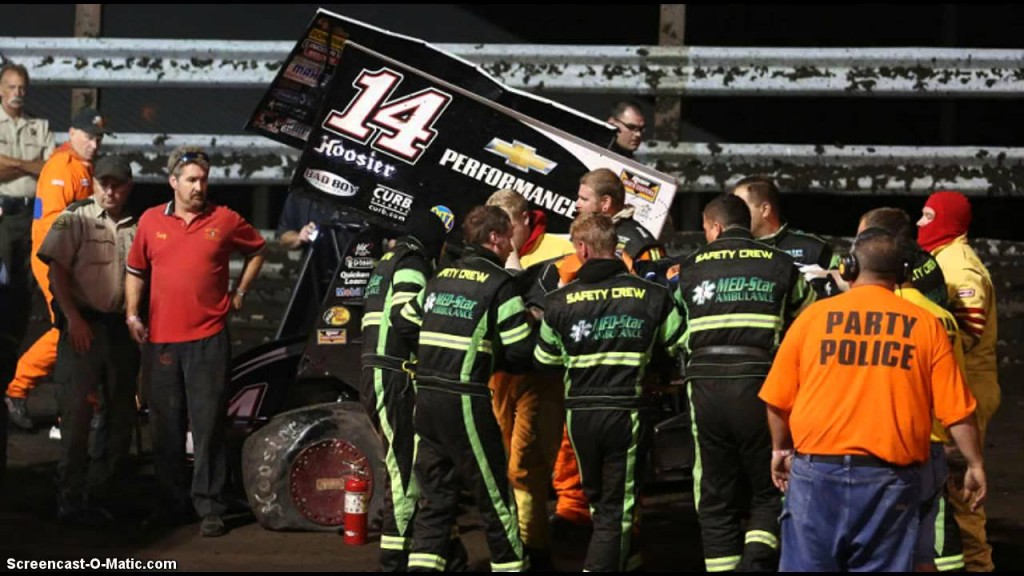NASCAR star Tony Stewart’s darkest day: Revisiting Canandaigua Motorsports Park
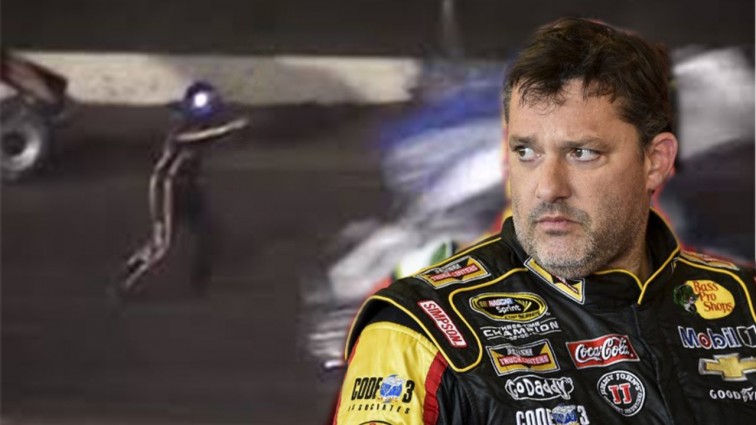
There isn’t much to Canandaigua Motorsports Park. Located on the Ontario County Fairgrounds in Canandaigua, New York, the small track is flanked by pole barns. Racing is suspended for a week at the end of July every year so those barns can be filled with livestock to be shown and judged during the Ontario County Fair.
The fact that the green flag still waves at all at the track is kind of surprising.
Larger venues have shuttered over lesser tragedies.
A little more than two years ago, Canandaigua Motorsports Park was plunged into the national spotlight after NASCAR Sprint Cup driver Tony Stewart, while driving in an Empire Super Sprints race, struck and killed racer Kevin Ward Jr.
“It was almost surreal. Like it didn’t really happen, but that it was something I saw in a TV show,” says fan Myron Parker, who attended the race on Aug. 9, 2014. “I’ve talked about it a lot, but to be honest, I didn’t actually see (Ward) get hit. I saw his car get spun, and then the caution flag went up.
“When you’re at a race and the caution gets thrown, you kind of stop paying attention. But then it happened, and it was like this chain reaction. First it was like, ‘Did someone get hit? Oh no, someone got hit.’ And then, ‘Oh shit. It was Tony Stewart who hit him.’”
Many details have been well publicized. Stewart spun Ward. On the ensuing caution lap, Ward exited his car and walked down the track, seemingly to confront Stewart, then Stewart’s car hit and killed him.
‘It was unreal’
Other details were not so well publicized. Like the torment that track officials and promoters at Canandaigua Motorsports Park received in the wake of Ward’s death.
“It was unreal,” says Greg Emerson, who does public relations for the track. “Social media blew up. There was a lot of finger-pointing and a lot of misinformation. People did not have the facts. We were here. We saw it happen. So it put a big strain on everybody.”
While the Ontario County Sheriff’s Office investigated Ward’s death (Sheriff Philip Povero declined to be interviewed for this story), the only piece of evidence most people saw was a cellphone video of the crash that was uploaded to YouTube.
After Ward’s death, his family mourned, and Stewart left town (he sat out races at Watkins Glen, Michigan and Bristol before returning to racing at Atlanta). But Canandaigua Motorsports Park remained, seemingly the only constant in the ordeal. A constant with an address, phone number and Facebook account all easily found by anyone with an internet connection.
Emerson says angry online denizens reacted swiftly and harshly. Many tried and convicted the track of gross negligence in online rants and comment sections, despite having little, if any, information about the tragedy.
“All they knew was that a kid died and that Tony Stewart was involved,” Emerson says. “That was enough for accusations to start coming out of the woodwork.”
No middle ground’
Tony Stewart has never been a warm, cuddly NASCAR star. He’s brash. He’s not afraid to confront the media and he won’t hesitate to tell you how he thinks it is.
In 2012, during a race at Bristol Motor Speedway, Matt Kenseth got into Stewart as the two were jockeying for position. Both cars slid off the track. Kenseth escaped, while Stewart spun, wrecking near the exit from pit row.
When Kenseth came back around, Stewart was waiting. With two hands, the wrecked driver took his helmet and chucked it at Kenseth’s car, bouncing it off the hood. Later, when asked by a reporter about whether he’d get the helmet back, Stewart replied, “I don’t give a crap.”
Those words seem to mirror a perception of Stewart’s attitude. An attitude that he just doesn’t care.
More recently, Stewart took aim at fellow driver Ryan Newman. During the NASCAR Sprint Cup Series’ final race of the regular season on Sept. 10 at Richmond, Stewart blatantly dumped Newman, who Stewart later said had made contact with him three times. When confronted with the news that New-man, his Chase dreams ruined, had told reporters Stewart’s move to wreck him was intentional, Stewart agreed.
“He’s right,” Stewart said at the time. “I mean, that was the third time he had driven into me during the night.”
Stewart’s reputation in NASCAR as a love-him-or-hate-him hothead was not unknown to Emerson.
“Even before anything that happened (at CMP) Tony was one of those guys who you either love or hate,” Emerson says. “There’s no middle ground with him. People either see him as a hardworking racer’s racer or a loose cannon. There are a lot of fans who just don’t like him. We heard from a lot of them.”
Picking up the pieces
In the days after Ward’s death, the staff at CMP was forced to deal with continued abuse and scrutiny from anonymous haters, most of whom had never even been to the track.
“That was one of the hardest parts,” Emerson says. “They had never seen or met the people who work to make (races) happen every week … the people who were left here to pick up the pieces.”
Emerson shut down the track’s Facebook page for a few days to try and curtail some of the feedback.
“We had to figure out a way to recover from this,” he says.
Organizers also closed the track for a week as they tried to regroup. In the end, Emerson credits the surrounding community for embracing the track and encouraging it to reopen. He says community members and sponsors banded together to ensure the survival of the track.
One of those sponsors was Paul Cole, who owns SuperGen Products, a local company that sells and distributes power equipment.
“Make no mistake, Canandaigua had a strong foundation,” says Cole. “If you don’t have a strong foundation, any minor accident can ruin you. It ruins marriages, it ruins families, it ruins businesses. But if you have a good organization in how you exist, you can get through anything together.
“And that’s what (Canandaigua Motorsports Park) did. … They addressed what they could as a
track, (while) still understanding that, inherently, racing is a dangerous sport and things happen.
“What happened with Kevin Ward wasn’t under the control of anyone other than the people on the track. All the fans, all the people in the tower, all the medical crews, they can only do their job when their job gets called, and they did it professionally and well.”
After Ward’s death, Cole stepped up as a sponsor, donating $1,000 to the safety crew at the track.
“I think pretty much everyone involved with the motorsports park took a step back and asked, ‘What can I do?’ Cole says. “Well, I’m not on the safety crew, but I am in a position to help. So that’s what I did. That’s how this community works.
“The world saw this racetrack as a place where, unfortunately, a young racer was killed. What the world didn’t see is how this community circled the wagons and weathered the storm that came after.”
Back on-track
This summer, Canandaigua Motorsports Park hosted more than 20 race nights.
“It’s normally pretty crowded,” says Sherri Walkowski, who went to six races this year. “People start showing up an hour or two before the cars hit the track because they want to get their favorite seats.
“It’s just a fun way to spend a Friday night … and see all your friends and neighbors.”
While the track survived the onslaught of criticism after Ward’s death and is thriving again today, the tragedy has not been forgotten.
“No matter what, this will always be the track where Kevin Ward died,” says Parker, the fan who was there that fateful night.
Parker, 52, lives in Canandaigua and has attended races at the track, and others in the area, for years.
“There’s something about dirt-track racing that is just so authentic,” he says. “It’s real. You recognize the names and faces, not because you see them on TV, but because you bought your air conditioner from the driver’s uncle.”
The self-proclaimed “die-hard gearhead” says CMP survived because of the community’s love of racing and, maybe, because Ward wasn’t local. Ward grew up in Port Leyden, NY, about 140 miles southwest of Canandaigua.
“I wonder if things would have been different if he was from this area,” Parker says. “He was from the region, but not a local boy. I wonder if the stands would be more divided if Kevin Ward had grown up here.”
Some armchair detectives took a grim perspective on the accident, saying it looks in the video like Stewart tried to “buzz” Ward, or get close to him with the car in order to churn dirt on him or scare him.
Parker doesn’t think so.
“No. I don’t think (Stewart) did it on purpose. Why would he? He’s been around racing too long.
He knows how dangerous this all is. There’s no way you can convince me that a professional race-car driver would ever intentionally try to scare someone with a moving race car on a hot track. I think it was just a tragic accident.”
Moving forward
In the end, an Ontario County grand jury agreed. On Sept. 24, 2014, Ontario County district attorney Michael Tantillo announced that, after hearing from more than two dozen witnesses, the grand jury concluded there was not enough evidence to bring charges against Stewart.
Almost a year to the day after Ward’s death, his family filed a wrongful death lawsuit against Stewart. The suit is ongoing.
So, while hearings and depositions are scheduled for the Wards’ civil suit, Canandaigua Motorsports Park is focused on moving forward with great racing.
“You know, this is a great track, with great people,” says Matt Sheppard, who recently won a DIRTcar Modified track title at Canandaigua Motorsports Park. “I’ve been racing here almost every weekend most of my life. I love this place.”
Cole, the local sponsor, agrees.
“You’ll see the demise of a track when the racers stop showing up and the fans stop showing up—because that’s when the sponsors stop showing up. Canandaigua doesn’t really have that problem.”
But some things have changed.
For one, Emerson says the track hasn’t reached out to any NASCAR drivers to come race, and he’s not sure if it will.
“We’ll think about (it). It’s crazy … I’ve gotten more than one call this year asking me if (Stewart) is going to come back this season. But I don’t think we’re ready yet.”
By Mike Larson
Политика конфиденциальности | Правила пользования сайтом

